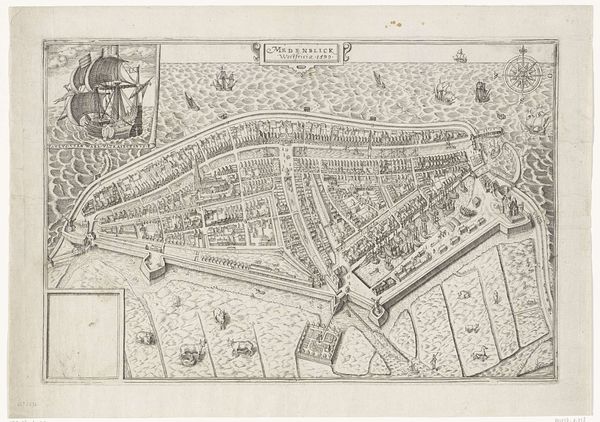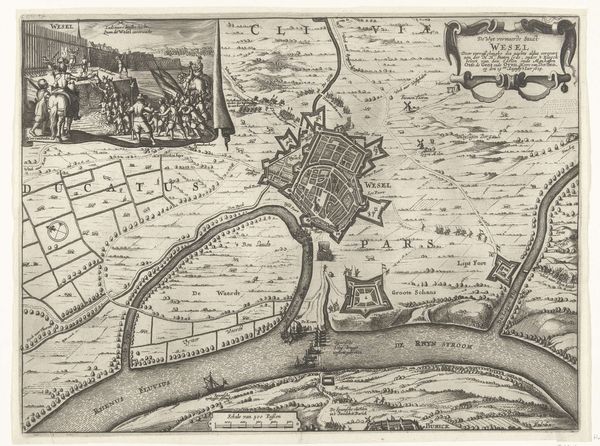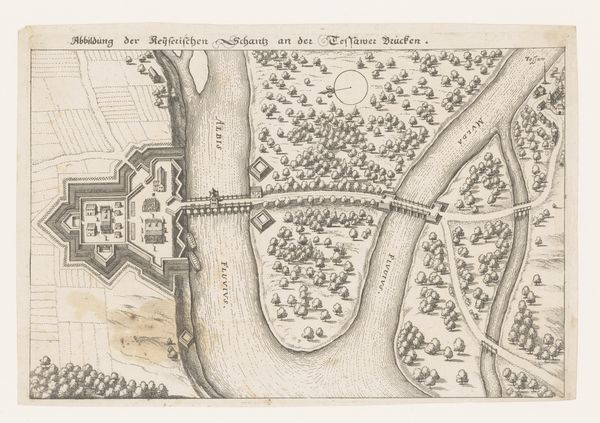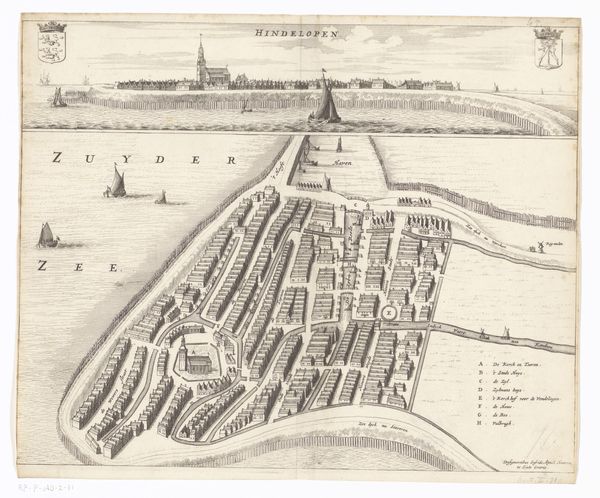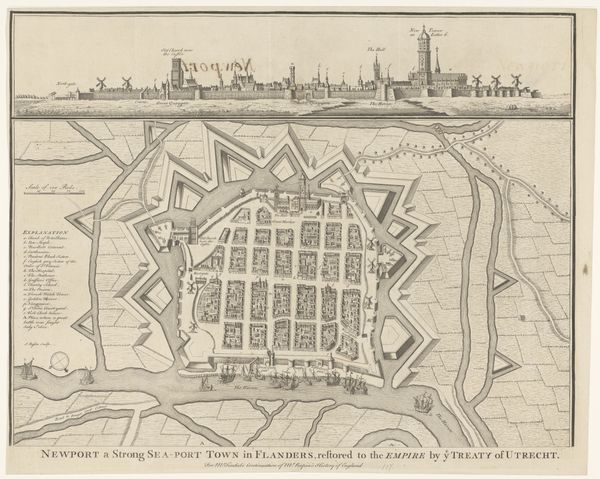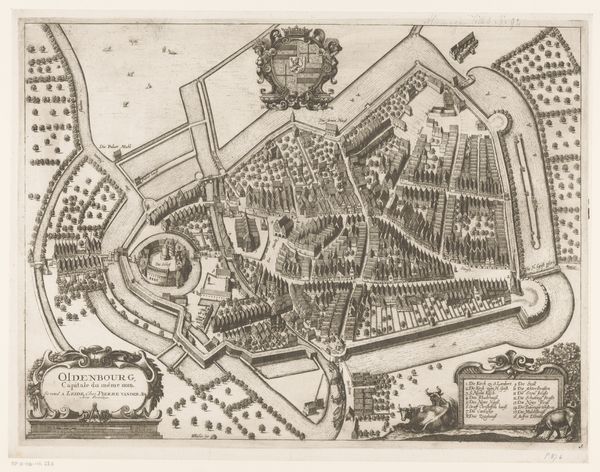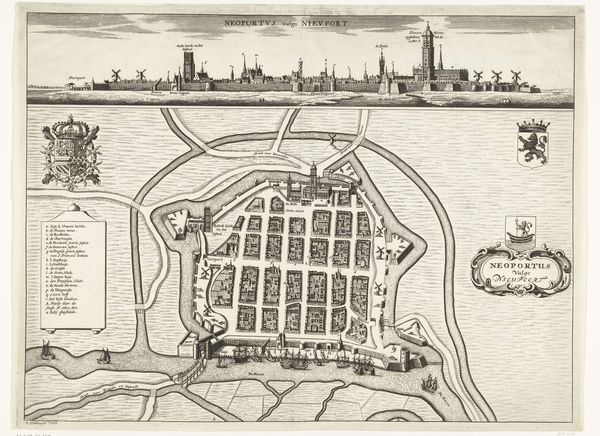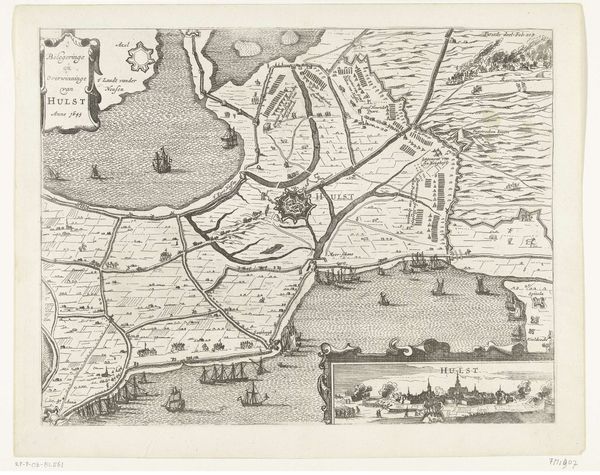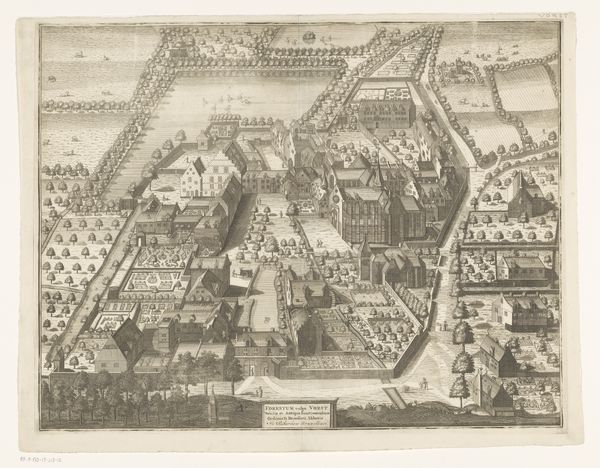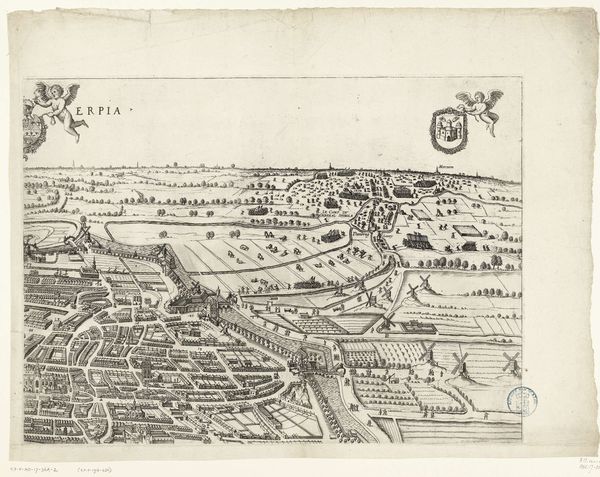
drawing, print, etching, engraving
#
drawing
#
baroque
# print
#
etching
#
landscape
#
geometric
#
cityscape
#
decorative-art
#
engraving
Dimensions: height 422 mm, width 517 mm
Copyright: Rijks Museum: Open Domain
Curator: I see grids, tiny trees regimented in rows like a meticulously planned army, and then that captivating long view of the town. I’m strangely calmed by this scene, like staring into a very well-organized ant farm. Editor: Reynier Blokhuysen created this etching and engraving in 1735. It's titled "Plattegrond van en gezicht op Belle," which translates to "Plan and View of Belle." You can find it here at the Rijksmuseum. What interests me immediately is its dual nature: a seemingly objective, almost scientific map juxtaposed with an artistic rendering of the same space. Curator: Exactly! It’s a dance between observation and...well, perhaps not imagination, but a curated perspective. What to include, what to emphasize—even in a map, choices are being made. Look at how he uses line weight to suggest depth and texture in that distant cityscape, even while keeping the map below it ruthlessly precise. It almost reminds me of memory itself: the detailed close-ups blurring into impressionistic long shots. Editor: I agree, the cityscape softens the geometric, somewhat sterile bird's-eye view of the city streets and land plots. Who exactly was this *for*, I wonder? Was it a tool for urban planning? A celebration of colonial power? Curator: Maybe both? A ruler gazing down on their perfectly ordered kingdom. But then there's this delicate dance happening within that supposed order, too. Even if unintentionally, Blokhuysen captured the seeds of… what would you call it? Controlled chaos? I think there is a beauty there too. Editor: Yes, I find myself considering the landscape. How did Blokhuysen decide which aspects were worthy of documentation? And who was erased from this image? While it seems a harmless town, can we be sure its creation didn’t inflict harm onto groups and landscapes? This piece, like many landscapes, requires careful consideration when you are dealing with such heavy political histories. Curator: Oh, absolutely. Even the act of mapping, of claiming to know and define a place, is loaded. Though I can still allow myself some escapism into his image, feeling that my imagination could fill the space in those landscapes. Thank you for giving it some valuable historical and contemporary insights! Editor: And thank you for pointing out that beauty need not exclude historical critique! I leave this with many ideas for the audiences!
Comments
No comments
Be the first to comment and join the conversation on the ultimate creative platform.
